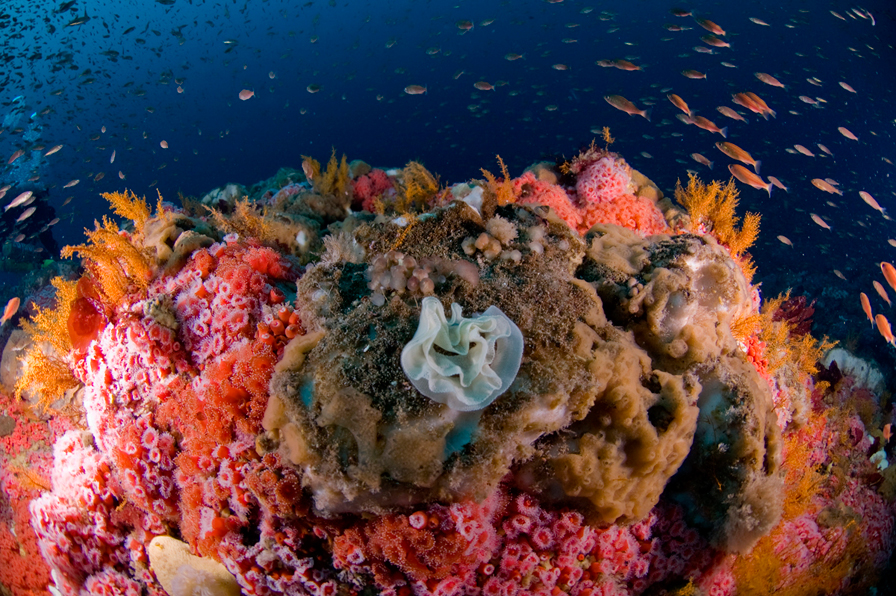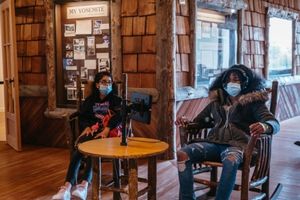

探索OMCA自然科学画廊中的七种不同的景观。
探索OMCA自然科学画廊中的七种不同的景观,发现我们州的一些你可能从未知道的地方。
例如,你是否知道本州最古老的树,实际上是世界上最古老的树,不是海岸红杉或巨型红杉,而是大盆地的鬃毛松(Pinus longaeva)。 鬃毛松是现存最古老的树木,有些达到5000年的年龄。你可以在自然科学画廊看到一棵保存下来的,大约有1200年历史的松树的特写,而且,不必跋涉到东部山区的恶劣环境中去看。
自然科学馆分为加州的七个不同的生态区域。当你参观时,你会在画廊的每个部分发现哪些鲜为人知的事实?
奥克兰

Even in the city, there is plenty of exciting nature to be found. Oakland, a complex urban environment many of us call home, has many diverse habitats from the tides that lap at our shoreline to the redwoods that tower above us all. When we get to know and better understand the natural world in our own backyards, it helps us all understand the human imprint—for better or worse—on California’s diverse ecosystems, and the countless ways we are interconnected with the natural world.
Pro tip: Take a selfie by the huge Welcome To Oakland sign.
萨特山丘

The Sutter Buttes continue to be an incredibly significant cultural and spiritual site for the California indigenous tribes native to the area. In addition to being a sacred place, this tiny mountain range rises above the Sacramento Valley and provides a look at what the area’s habitats may have been like before they were lost to human development and agriculture. This area is also an essential migratory pitstop for millions of birds and animals each year. The complexity of land ownership in the region is a case study for presenting contemporary issues of resource management and stewardship found throughout California.
Pro tip: Trust us, you won’t regret exploring the Bird Lab with taxidermy of beautiful birds and drawers of clutches of eggs most people never have the chance to see.
夏斯塔山

Mount Shasta, an iconic landmark, plays a defining role in the region’s ecosystems. The snow melt from the large volcano feeds the Sacramento and Klamath Rivers which are both critical to California’s water supply. Water from the Shasta Dam and Reservoir is transported 450 miles from Northern California, all the way to Southern California. Visitors will learn about the habitats that surround the volcano and how the water from it feeds and sustains local wildlife in a myriad of habitats, as well as many humans. Oakland doesn’t get its water from Mount Shasta, instead the city’s water comes from Sierra Nevada snowmelt and the Mokelumne River Watershed.
Pro tip: Adults and kids love to climb in and out of the lava tube.
优胜美地

The Yosemite you may know and have seen is only a small part of the story. Yosemite’s spectacular beauty and diversity are known the world over. The gallery not only depicts the magnificence of California’s #1 natural tourist destination as the “Yosemite you know” with visitor-contributed photos, and vintage postcards, but also depict long-term human impacts to the park. The “Yosemite you don’t know” features the unique and threatened habitats most visitors never see.
Pro tip: When you visit, find the one thing you wish all visitors of Yosemite would realize?
特哈查皮斯人

This mountainous region is the hub for five major ecosystems. The Mojave Desert, San Joaquin Valley, Sierra Nevadas, Great Basin, and Coast Ranges all meet in this key area of ecological evolution. Impressive dioramas reveal how people helped species like the tule elk recover from the brink of extinction and where mountain lions have space to roam.
Pro tip: People love staring at the majestic and mysterious taxidermied tule elk.
科切拉谷地

The desert’s seemingly harsh environment supports an abundance of life. Coachella Valley is a desert of palm oases and sand dunes, rocky hills and dry piňon forests. Visitors see how uniquely Californian species thrive in this arid yet fragile environment, and how the human population taxes the scarce water supply in this region. But, diverse groups of people are working together to preserve this special land, which can inspire us all.
Pro tip: say ‘hi’ to David Glowie, the desert hairy scorpion on view.
科德尔滩国家海洋保护区

The rocky reef off the California Coast supports an amazing web of life. Cordell Bank National Marine Sanctuary, is one of our nation’s 15 National Marine Sanctuaries protected by the National Oceanic and Atmospheric Administration. It is an underwater coral topped rocky bank, teeming with marine life. The food-rich waters attract whales and seabirds from around the Pacific Ocean. The section features several large-scale environmental dioramas, two commissioned art installations, and an investigative laboratory.
Pro tip: investigate the diverse organisms of Cordell Bank, from tiny plankton to the blue whale.
We hope you enjoy the Gallery of Natural Science, and learn a thing or two about the natural landscapes of California. By getting to know our ecosystems, we’ll all find ways to take better care of the lands and life that sustain us. What better way to celebrate Earth Day than that?
Final pro tip: Don’t miss the real live fish, turtles, and ducks in the Koi Pond and enjoy the many bird species flitting around and singing in our Garden.